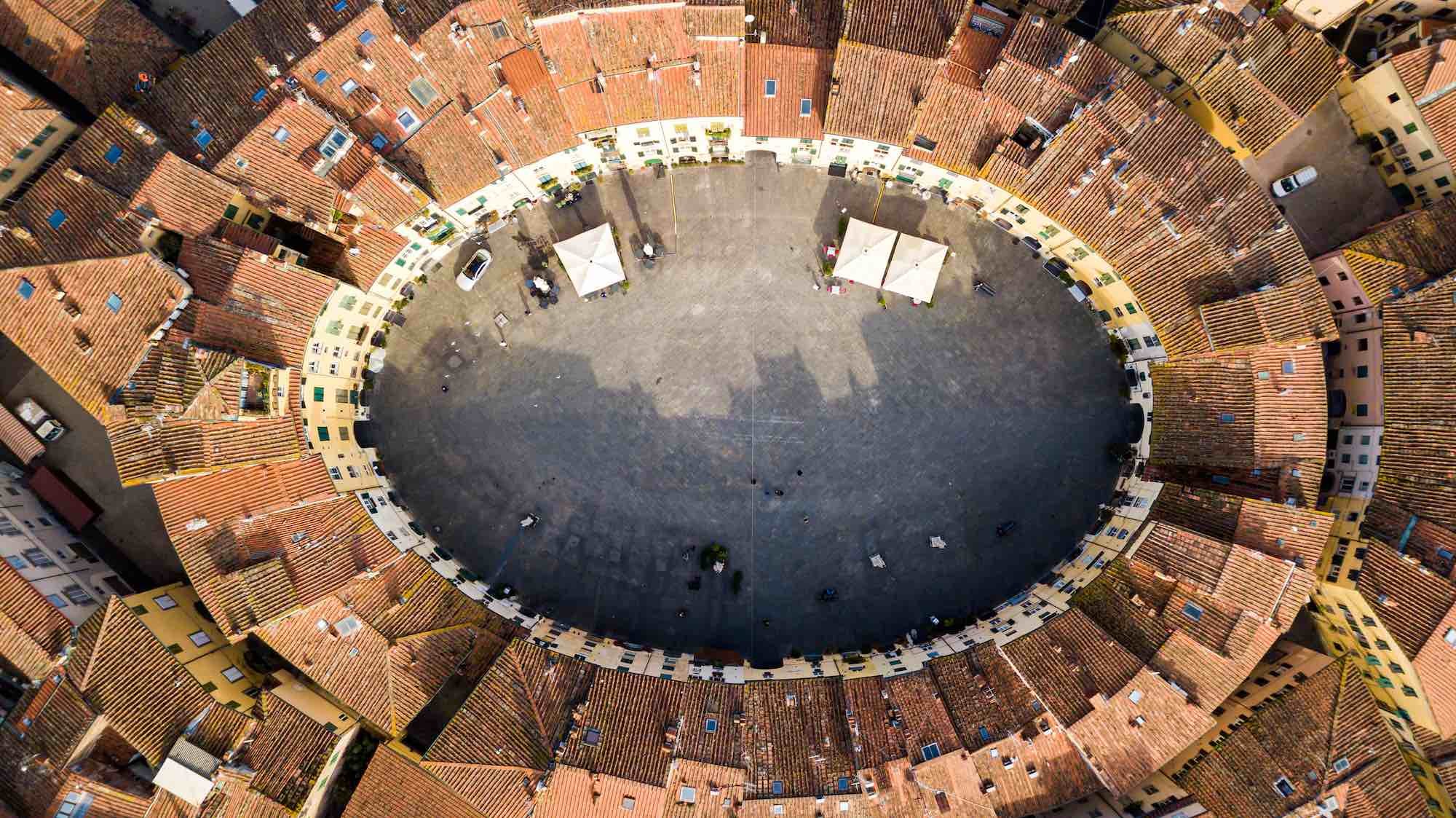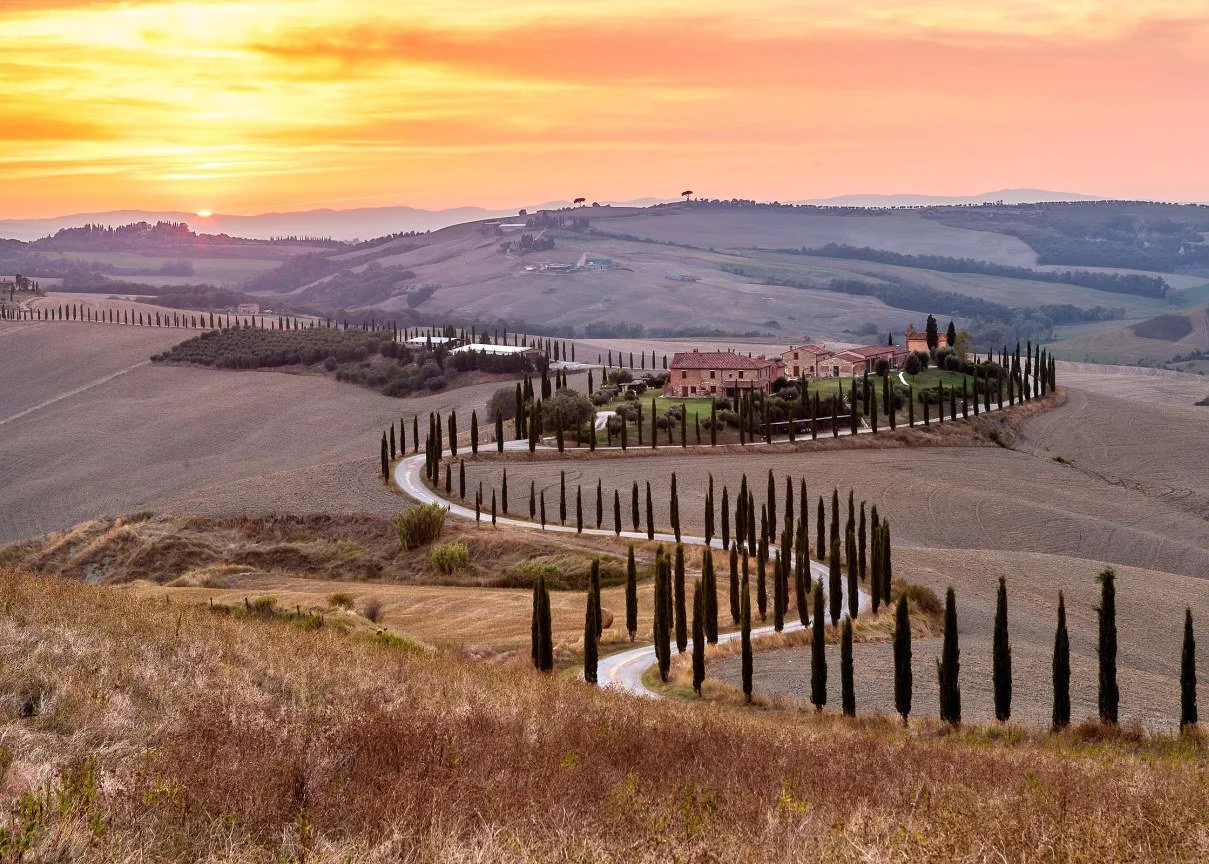ART AND CULTURE
From Churches, to Galleries and Museums there are plenty cultural and artistic sites to explore in Tuscany.







-

Piazza dei Miracoli
The Piazza del Duomo di Pisa, or Piazza dei Miracoli, is a truly incredible place, where you can observe and visit the main beauties of the Tuscan city. In this huge square there are in fact 4 of the main places of interest in Pisa: the famous Leaning Tower the Baptistery of San Giovanni the monumental Camposanto the Cathedral of Santa Maria Assunta. Needless to say, despite this feature, it is by far the most visited area of the city, attracting millions of tourists every year.
-

Crete Senesi
The landscape of the Crete is the triumph of essentiality and harmony, it is a timeless image, a painting in which the shapes of an Etruscan graffiti and a sign of modern art merge. It is a harmony that enters you and has the power to rebalance your energies: emotions and sensations are transformed and dilated in the calm of space.
-

Piazza del Campo
The top attraction of Siena is Piazza del Campo, the heart of the historic center and city life, it is a sort of funnel in which the three main streets of the center converge. On the square overlook historic buildings of great beauty: among these the most famous are the Palazzo Pubblico, the Torre del Mangia, Cappella di Piazza and Palazzo Sansedoni.
-

San Casciano Val Di Pesa
Located in the valley of the river Pesa, which crosses the Chianti. It is a town on the outskirts of Florence, which is worth visiting to admire the traces of its walls and medieval towers. The Museum of Sacred Art set up inside the Church of S. Maria del Gesù houses valuable works of art from the territory: among the most important works we point out the dossal attributed to Coppo di Marcovaldo representing St. Michael the Archangel and stories of his legend and the Madonna and Child by Lorenzetti.
-

Duomo di Siena
The second most important square in Siena, also very visited but perhaps less famous internationally than the Campo, is Piazza del Duomo. On it overlooks the religious building symbol of the city: the Metropolitan Cathedral of Santa Maria Assunta, better known as the Cathedral of Siena. It is one of the greatest examples of Romanesque-Gothic architecture in Italy, with an external façade characterized by a two-tone black-white and elaborate decorations.
-

Impruneta
The cult of the Madonna dell'Impruneta has favored over the centuries the accumulation of precious gifts and votive offerings preserved today in the Museum of Sacred Art adjacent to the church together with illuminated manuscripts, goldsmiths and silverware. Thanks to the great tradition of brick and terracotta kilns, Impruneta terracotta has become a characterizing and distinctive element of Tuscan architecture and landscape, as well as a famous product exported all over the world.
-

Borgo Stretto
The other nerve center of the city life of Pisa is Borgo Stretto, simply called "Borgo" by the Pisans: it is a characteristic porticoed street overlooked by elegant buildings dating back to the fourteenth and fifteenth centuries
-

Piazza dei Cavalieri
Another square not to be missed in Pisa, second in importance and beauty after Piazza dei Miracoli, is Piazza dei Cavalieri, which was for centuries the center of power; today it is considered the cultural heart of the city because here is the prestigious Scuola Normale di Pisa. It is so called because it was once the headquarters of the Order of the Knights of Santo Stefano founded by Cosimo I de' Medici.
-

Palazzo Reale
Built by a wealthy Pisan family in 1159, the Royal Palace of Pisa was enlarged and embellished by the Medici in the second half of the sixteenth century. The building is best known for being the place from which Galileo Galilei showed the Florentine nobles his brilliant invention: the telescope. It is currently home to the National Museum of Palazzo Reale, which exhibits the artistic masterpieces collected by the families residing in the palace.
-

Piazza dell’Anfiteatro
The most beautiful square in Lucca is the central Piazza dell'Anfiteatro, so called because it stands on the place occupied in Roman times by an amphitheater and partly takes up the ancient route: this explains its particular ellipse shape.
-

Garfagnana
Garfagnana is like saying nature. A treasure chest enclosed between the Apuan Alps and the Apennines and crossed by the Serchio river. Discover an incredible and rare location with its cultural and natural integrity. It is a scenario that you do not expect, there are revelations of nature such as the Orrido di Botri, the canyon of Tuscany carved by the waters of streams that flow into this prehistoric fissure.
-

Grosseto
The first stop of a visit to Maremma must necessarily be its capital: it is Grosseto, a city in Tuscany as the provincial capital, certainly not on mass tourist routes, but certainly worth a visit. In Grosseto, in fact, you can breathe art and sea, a perfect and decidedly unusual combination.
